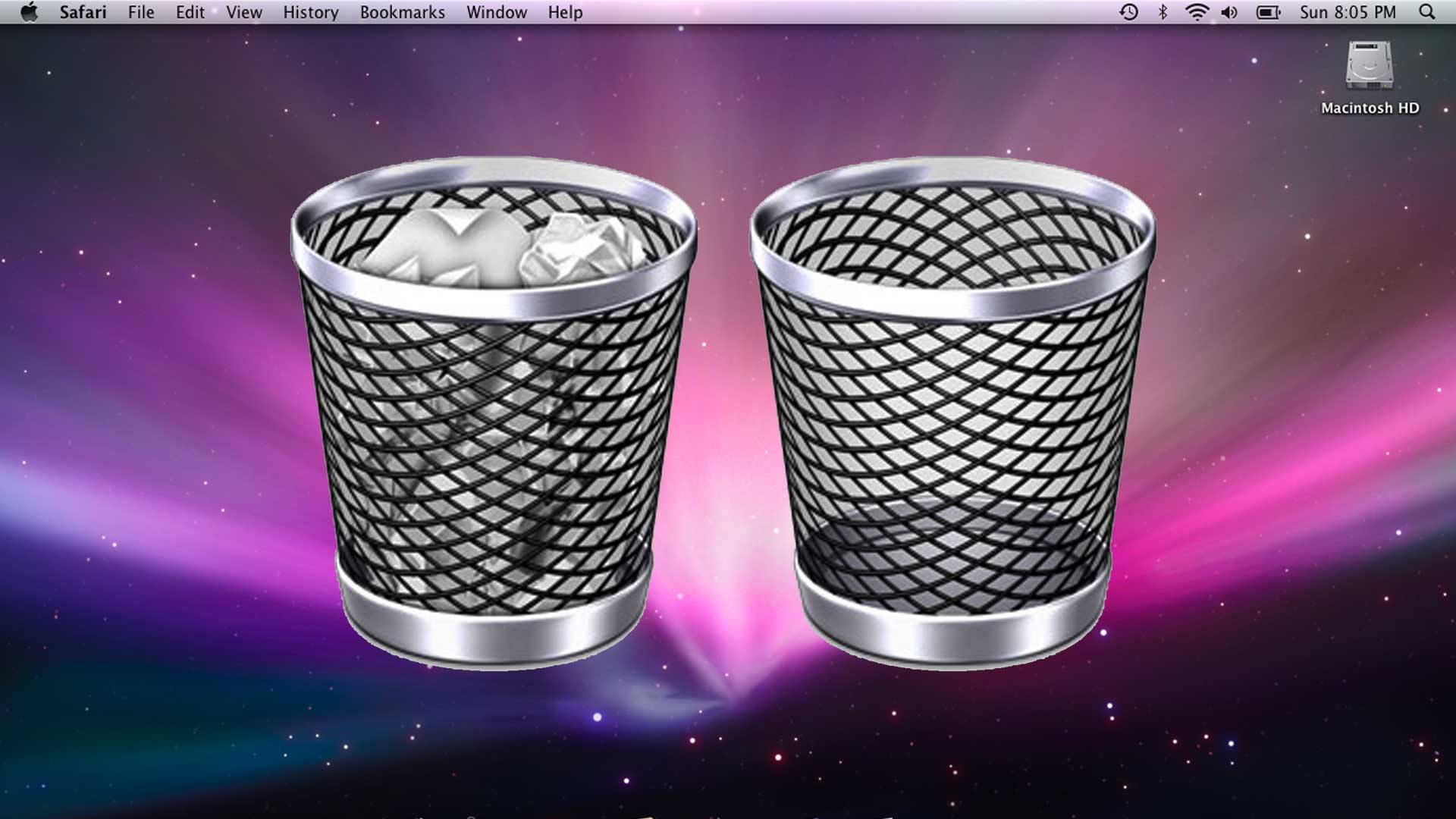
Due to their earlier agreement with Microsoft, Apple’s attempts to retain rights to particular icons and design choices also largely failed. Because no one can copyright a concept, “Apple cannot get patent-like protection for the idea of a graphical user interface, or the idea of a desktop metaphor,” the decision read. Circuit Court of Appeals, where the judges held overwhelmingly for Microsoft. After six years of litigation, the suit found its way to the 9 th U.S.
#MAC TRASH ICON RETRO WINDOWS#
The suit named 189 separate parts of Windows and NewWave that, in Apple’s view, aped the Macintosh OS, including click-and-drag, folder icons that dim when in use, and an overall desktop consisting of “ overlapping rectangular windows in front of a muted background pattern.” Taken together, Apple argued, these elements made the “look and feel” of a Windows computer far too similar to that of a Mac.īut Apple’s allegations fell too far from the tree.

In 1988, Apple sued Microsoft and Hewlett-Packard over the “Mac-like”-ness of their newest operating systems, Windows 2.03 and NewWave.
#MAC TRASH ICON RETRO MAC#
Later versions of the Mac operating system added extra features-OS 4’s trash can bulged out when full, and the icon design became progressively more three-dimensional, promising infinite roominess. One optional extension for OS 7 even featured a tiny, pixelated Oscar the Grouch, who popped out of the can singing his signature tune, “I Love Trash.”Įventually, though, things got too close for Apple’s comfort. “So, for example, to erase a particular program, one can simply ‘drop’ the program’s icon into an illustration of a trash can on the screen.” “Cartoon-like representations, called icons, of computer parts or functions, are displayed on the screen and manipulated with a device called a mouse,” explained technology writer Myron Berger in the New York Times in 1986.

It also provided a handy way for early adopters to describe the computing process to those who were scared or skeptical.

This tiny, charming illustration soon came to symbolize everything good about the GUI. “If you can find the trash can, you can run a computer,” promised one early advertisement for the Lisa.


 0 kommentar(er)
0 kommentar(er)
